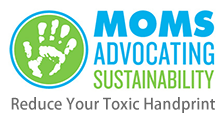By, Florence Williams.
Have you ever wondered why estrogenic substances are common in household plastics and personal care products? And why government regulators aren’t doing a better job of protecting us from endocrine disruptors? They seem like simple questions but the answers are incredibly complicated.
Last week I had the privilege of participating in a policy forum hosted by George Washington University’s School of Public Health and Human Services. Two of the other women there are neck-deep in the swamp that is regulatory policy: Linda Birnbaum, a toxicologist who is the director of the National Institute of Environmental Health Sciences and Lynn Goldman, Dean of the school, a pediatrician and former assistant administrator of the EPA under Clinton.
The forum was celebrating the release of a new report from the National Institute of Health’s Interagency Breast Cancer and Environmental Research Coordinating Committee. It’s one we should all celebrate because it suggests turning the nation’s approach on its head: we shouldn’t just be focused on detecting and treating breast cancer. We should be focused on preventing it in the first place. And to do that, we need to invest more research dollars in figuring out what causes it. Hallellujah! Good bye pink ribbons; hello, white coats. One major class of cancer-causing suspects is (you probably guessed it) endocrine disrupting compounds. As Dr. Birnbaum pointed out, we know from legions of animal studies that many industrial and commercial chemicals have the ability to alter the mammary glands, especially (and this is important) when animals are exposed in the womb, shortly after birth, or during puberty.
Breast cancer will strike more than 230,000 women this year—and likely cause 40,000 deaths, accounting for roughly 14 percent of all cancer deaths in the U.S. Many environmental factors increase our risk, such as radiation exposure, alcohol consumption, obesity and exposure to certain chemicals. But researchers aren’t just looking at risk factors. They’re also looking at when they may do the most harm.
“Windows of susceptibility” are “the time damage is most likely to occur,” Dr. Birnbaum said. “We’ve got to stop talking about, is it genes or is it environment, because it’s always going to be both,” Dr. Birnbaum said. “You can’t change your genes, but you can change your environment.”
This means, we, as parents who want to be cautious, need to think about protecting our daughters as early as possible from chemicals that haven’t been adequately tested. But it also means our government needs to get on the ball – fast – about testing and regulating questionable compounds.
Both Drs. Birnbaum and Goldman pointed out that there is cause for optimism. Both the NIH and the EPA are starting to do more testing of endocrine disruptors, and they’re starting to look at animal mammary glands more than they have in the past. Dr. Birnbaum’s agency is spearheading a $20 million study looking at the low-dose effects of the common plastic additive, BPA, and the EPA is finally, after long delay, getting its endocrine disruptor screening program up and running, but is currently only looking at pesticides. The agency is also studying whether it needs to incorporate low-dose testing into its current toxicology models. And it will start speed-testing thousands of chemicals that are currently on the market but have never been tested. It’s still a crude method but it’s a great start. Going further, a proposed bill, the Safe Chemicals Act, would give the EPA more teeth to regulate chemicals after it’s tested them.
The burden should not just be on us as parents to sort through the products in the grocery store. Prevention starts higher upstream, with manufacturing and meaningful regulations.
Florence Williams is a contributing editor at Outside Magazine and a freelance writer for New York Times, New York Times Magazine, Slate, Mother Jones, High Country News, O-Oprah, W., Bicycling and numerous other publications. Her first book, BREASTS: A Natural and Unnatural History, was recently published by W.W. Norton. It was named a notable book of 2012 by the New York Times and nominated for a Los Angeles Times book prize. You can follow Ms. Williams on Twitter (@flowill) and like her on Facebook. http://florencewilliams.wordpress.com/
